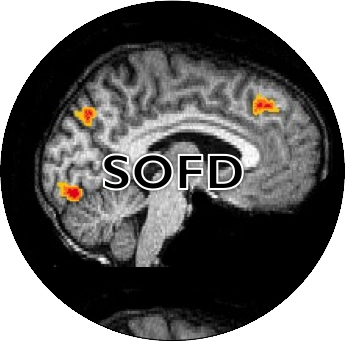
Tweet
October 29, 2015
Proceedings of the Natural Institute of Science | Volume 2 | HARD 11
The War Between the Barbates: Facial hair of the commanders of the United States Civil War
Matt J. Michel1
1 - PNIS
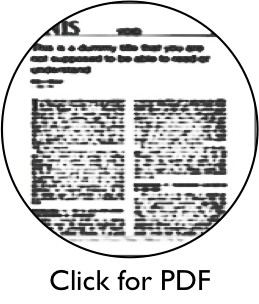
Introduction
On the morning of May 9, 1864, the Union Army of West Virginia, under the command of Brigadier General George R. Crook, encountered several Confederate units led by Brigadier General Albert G. Jenkins on a bluff just south of Cloyd’s Mountain. After about an hour of fierce combat, Jenkins’ defensive position had weakened and a retreat was ordered. Several days later, Crook’s troops would go on to destroy portions of an important Confederate railroad, but ultimately withdrew to West Virginia after running low on supplies.
The Battle of Cloyd’s Mountain is not a particularly noteworthy battle. You’ve likely never heard of it. It’s not listed in textbooks and is not seen as an important Union victory. Its strategies and tactics are not detailed in movies and is only occasionally mentioned in Civil War history books. However, the Battle of Cloyd’s Mountain has one distinction to which no other Civil War battle can attest: its opposing commanding officers, Crook and Jenkins, had the most combined facial hair of any pair of combatants in the entire war.
One the most renowned yet ancillary features of the U. S. Civil War (USCW) is the vast diversity of facial hair styles sported by its participants, so much so that Union General Ambrose Burnside is probably more famous for the type of facial hair he pioneered—sideburns—than for his service in the war. There have been tumblrs, tumblrs turned into books, and even online tournaments dedicated to the facial hair of USCW generals. However, despite all the infamy of the beards of the USCW, there has not been one comprehensive quantitative analysis of the facial hair of the soldiers of the USCW. Until now.
In Part I of our analysis, we present data on the facial hair of the commanders of the ‘major’ battles of the USCW and determine which side, Confederate or Union, had the beardiest troops. Part II, which is available here, will determine if commander pilosity is related to success on the battlefield.
Methods
Over 3 million soldiers fought in the USCW, so we decided to filter our potential dataset just a bit. We narrowed the dataset by choosing only the major battles of the USCW, and choosing only the commanders (finding and analyzing photos for all soldiers would be close to impossible). The National Park Service has put together a list of 383 important USCW battles (a .csv file is available here), that lists, among other attributes, the name of the battle, the commanders for each side, and the casualties for each side (when known).
From this dataset, we obtained beard measurements for commanders of battles in which the number of casualties was known. We searched online for photos, using Wikipedia, americancivilwarphotos.com, and generalsandbrevets.com as resources. Ultimately, we found photos for 123 Union Commanders and 95 Confederate Commanders, covering 264 battles. When multiple photos were found for one person, we chose the photo that gave the best view of facial hair and face. In the event that a commander changed facial hair style (like Union Gen. Phil Sheridan), we chose the beardiest one.
For each photo, we measured the total area of facial hair (excluding eyebrows) and the total area of the face not covered by facial hair (see Fig. 1) using the magnetic lasso tool in Photoshop. We then obtained a Beard:Face ratio (i.e., divide beard area by face area). A B:F ratio of 0 indicates clean shaven, and a ratio greater than 1 indicates facial hair larger than the face.
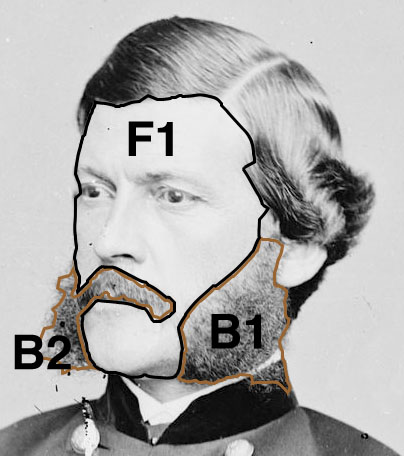
We also classified each photo into one of 11 styles of facial hair (in ascending order of beardiness): clean shaven, moustache, muttonchops, Van Dyke, chin curtain, French cut, muttonchops with moustache, goatee, friendly muttonchops, short beard, and long beard (illustrations of these types are given in Fig. 2).
Results and Discussion
Facial Hair Types – Overall, more than 90% of the commanders in our sample had at least some type of facial hair. The most popular style was the long beard, sported by 53 commanding officers (~24%), followed closely by the short beard (41 officers; ~19%). The goatee and all the muttonchops varieties were the least popular (Fig. 2).
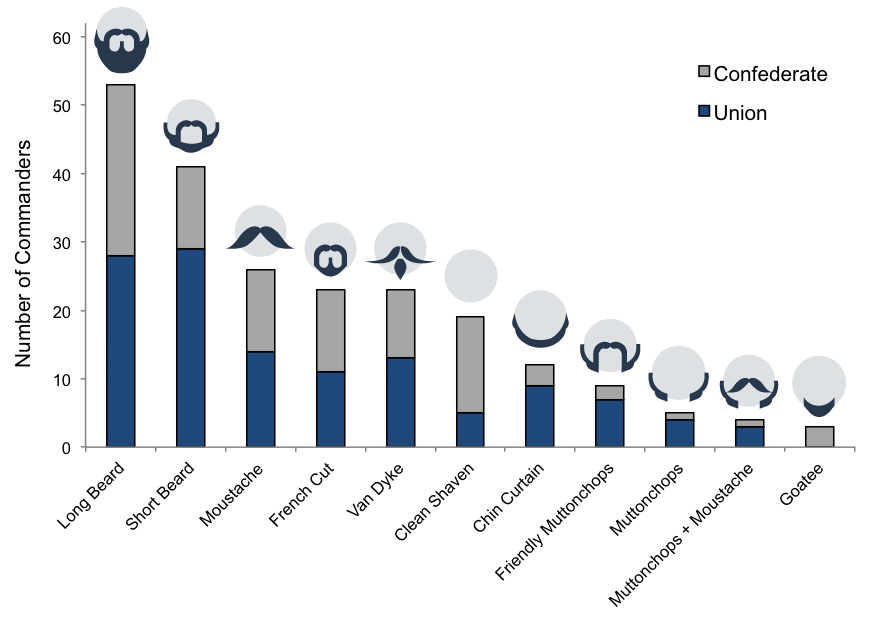
Some styles were evenly split between the two different sides (like long beard and moustache) but there were also styles with big disparities, like short beard (29 Union to 12 Confederate), clean shaven (5 Union to 14 Confederate), and the muttonchop derivations (14 Union to 4 Confederate).
We see an important difference between the North and South. Northern officers tended to sport the styles that required some amount of trimming and/or design, like the short beard, the different types of muttonchops, and, to some extent, the Van Dyke.
Confederates, on the other hand, kept things looser, perhaps in deference to a literal reading of Leviticus 19:27? Rebels also had more smooth-shaven faces, which might be explained by several factors. Facial hair became popular in the mid-1850’s, and it’s possible that the traditional South was more resistant to this trend. In addition, Abraham Lincoln was the first US President to have a beard (having, at times, a chin curtain and a goatee), and maybe clean-shavenness was a subtle protest by Confederate commanding officers.
Beard:Face Ratios – The distributions of Beard:Face ratios for Union and Confederate Commanders are given in Fig. 3, along with some notable names highlighted. You can see the Confederate’s dominance in clean shavenness and the Union’s dominance in short beards. Indeed, the Union had greater overall Beard:Face ratios than the Confederates (Union median ratio = 0.55, Confederate median ratio = 0.38), meaning, to our surprise, the Union officers were more barbate than the Confederates.
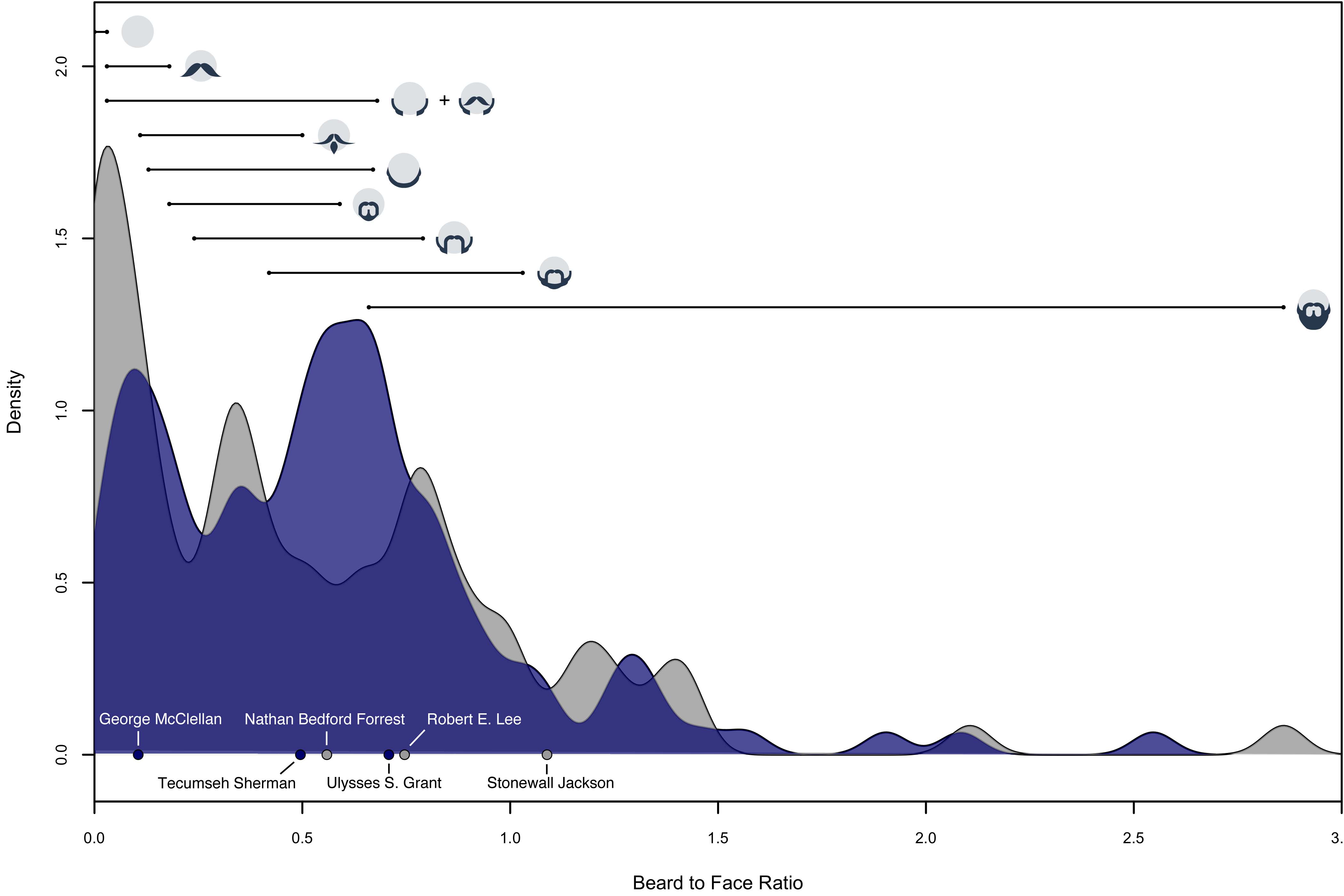
The commanding officer with the greatest Beard:Face ratio was the aforementioned Confederate Brig. Gen. Albert G. Jenkins, with a ratio of 2.86 (i.e., a beard almost 3x larger than the face!). For the Union, its beard champion was Major Gen. (and future Secretary of War) John M. Schofield, with a ratio of 2.55. However, these individuals were the exceptions; very few commanding officers had facial hair that was larger than their faces (i.e., a Beard:Face ratio > 1).
Both the qualitative and quantitative data points to the Union winning the Battle of the Barbates: the North had a greater diversity of facial hair styles and higher overall Beard:Face Ratios.
A full list of commanding officers and their facial hair statistics is available here.
Combined Ratios for Different Battles – If we add up the Beard:Face ratios of the two commanders for each USCW battle, we can figure out which battles were the beardiest in the USCW. We’ve already mentioned that the Battle of Cloyd’s Mountain was the most hirsute, and Fig. 4 shows the other top showdowns between commanders in terms of facial hair density (although, Fig. 4 could also equally be mistaken for a schedule of an upcoming Coleco competition in the Hipster Olympics).
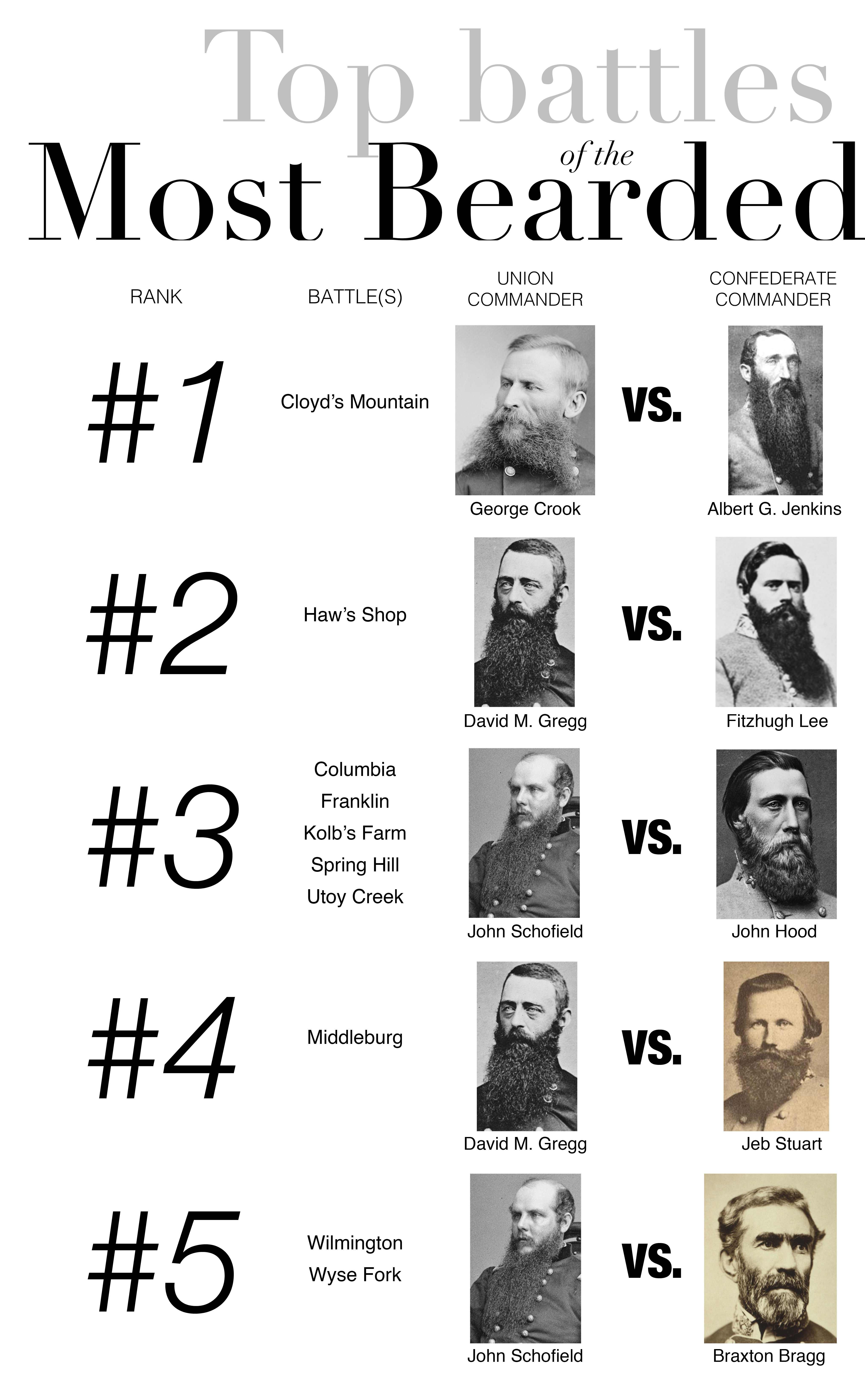
The full distribution for all the major battles, grouped by which side won the battle, is given in Fig. 5. You can see that most have combined ratios less than 2, and the overall median ratio was 1.08. There wasn’t any difference in Total Beard:Face ratios of commanders between Union and Confederate Victories (both had median ratios of 1.06). However, Inconclusive Outcomes tended to involve heavily bewhiskered opponents (median ratio = 1.42), which suggests that that heavily bearded opponents spent more time contemplating the intricacies and majesty of each other’s facial hair than strategizing for the upcoming battle.
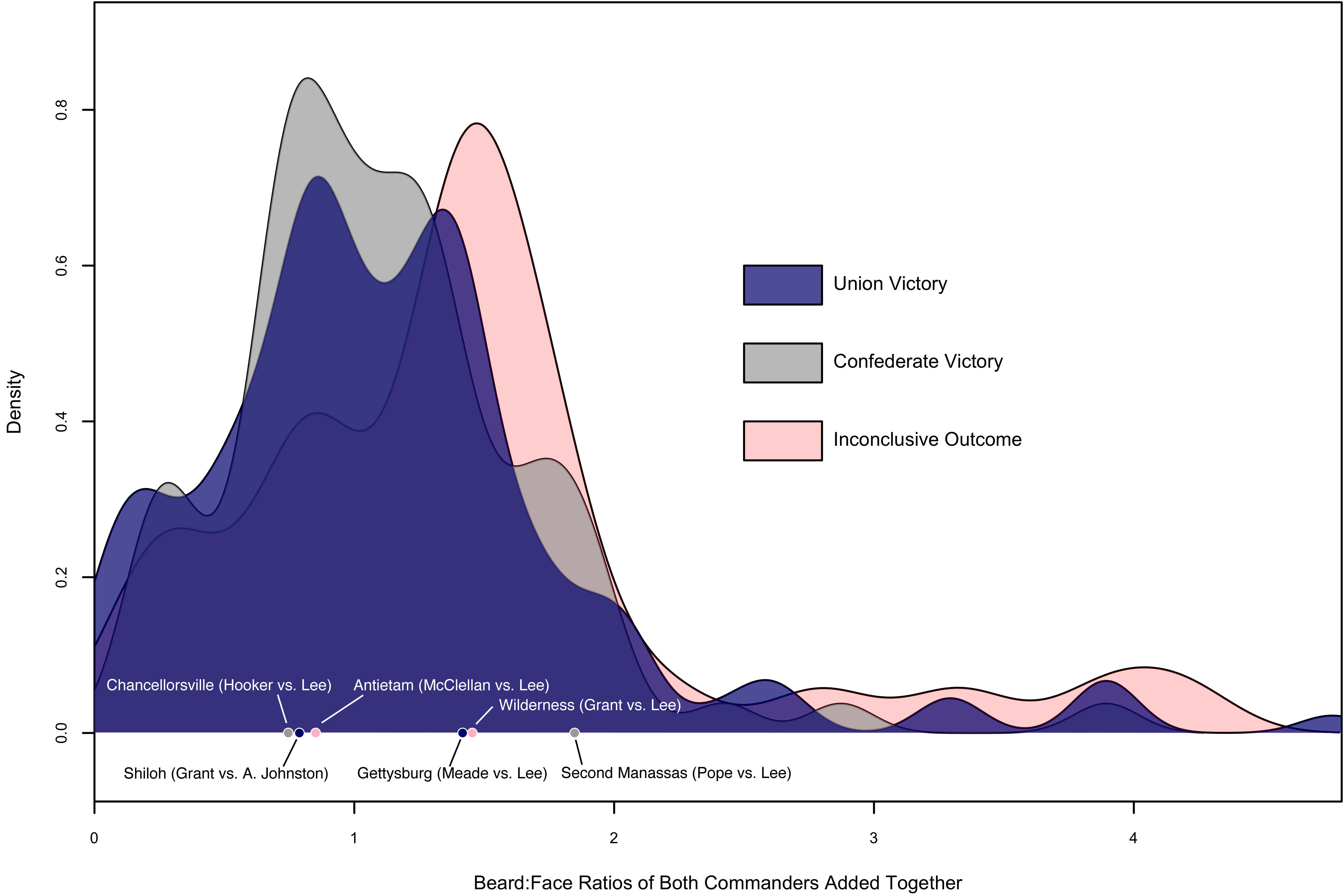
The Battle of Gettysburg was slightly higher than average as Gen. George Meade and Gen. Robert E. Lee (both short beards) combined for a ratio of 1.42. And, there were just two Battles of the Clean Shavens among our dataset: The Battle of Wauhatchie in Tennessee and Georgia (Union Commander Joseph Hooker vs. Confederate Commander Micah Jenkins) and The Battle of Mobile Bay in Alabama (Union Commander David Farragut vs. Confederate Commander Franklin Buchanan). Both of these were Union victories.
A full list of battles used in this analysis, as well as their facial hair statistics has been made available here. We will discuss how bearditude affected battle performance in part II of this study.
Conclusions
The 1850’s saw a dramatic rise in facial hair styles—especially beards—and, from our analysis, we conclude that American military personnel didn’t let a Civil War stop them from experimenting with the newest trends in personal grooming. It’s difficult to say exactly why 9 in 10 officers went with facial hair. Perhaps it was an opportunity to distinguish one’s self in an otherwise uniform environment. Perhaps it was an attempt at normalcy during the bloodiest turmoil in American history. Or perhaps there was a running bet among officers on who could grow the craziest facial hair (our vote: Judson Kilpatrick). Whatever the reasons, the diversity and abundance of facial hair will remain one of the more prominent postscripts of this War between the States.
More Articles Below!

Proceedings of the Natural Institute of Science (PNIS) by https://instsci.org/ is licensed under a Creative Commons Attribution-ShareAlike 4.0 International License.


